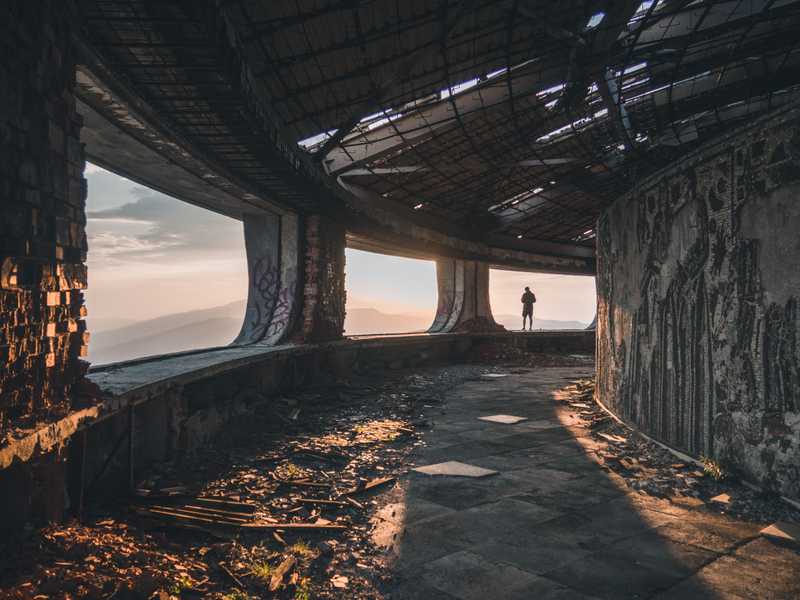
A Bohmed Ruin
by Ewan C. Forbes
“Every act of creation is first an act of destruction.” Picasso said that. In the early Thirties he also said good artists copy, great artists steal. T. S. Eliot said the same thing a decade before, but barely anyone was listening. Picasso said that a picture is a sum of destructions, and that the red he took from one place always turned up some place else.
If a building, say a castle, is destroyed beyond the ability of the structure to fulfill its function, it is ruined. The stones that make it up have moved from one state of being to another. Let us say that five hundred years later an American comes and buys it and has its fallen masonry mapped by experts, packed up, and shipped to the New World. The American's name is Mike. He has it reassembled as it was when he bought it, ruined. But now the ruin sits atop his New York penthouse, so high that nobody else would ever see it, or so he thinks to himself. But Mike has cancer, a cancer that literally couldn't care less about how much money he’s worth, or the life of exclusivity he built up. Mike dies, and everyone finds out about the castle on top of a building in New York City. They say it's the oldest building in the country, but they are wrong. It's not even the oldest building in the state: the Met has a small part of Ancient Egypt inside it.
“...there is no ultimate set of separately existent entities, out of which all is supposed to be constituted. Rather, unbroken and undivided movement is taken as a primary notion.” Our ruined castle has taken its next phase within this movement of wholeness. Now, the parts of the wholeness immediately near the castle react to its presence. Part of the wholeness is called The New York Times, and this part tells other parts, which in turn influence others. One of the people who reads about the castle tweets an inane comment about it. Someone who follows the first, just to laugh at everything he says, reads and does so. The laugh is a jarring bray, short in duration, but just long enough to annoy his friend sitting next to him in his flat in Dublin. The annoyance prompts memories, which lead to an argument. Later that day both men go separately to the shop below their flat and, still vaguely annoyed, are both rude to the woman who works there.
She, upset, calls her sister who lives in Brazil. The length of the phone-call, in turn, causes her sister to miss her taxi. The sister in Brazil thinks she feels an irrational annoyance at her sibling for holding up her day for no reason and causing her to miss her ride, not knowing that she had just avoided being in a fatal car-crash. One that would have killed both her and the child she is carrying. If the sister in Brazil had known, she would have breathed a sigh of relief containing an air molecule once burped up by Julius Caesar, but that didn't happen because she didn't know. The change in her breath made the difference between her daughter becoming a psychologist rather than a brain surgeon, but that had nothing to do with Julius Caesar.
The men who built the castle didn't even really know what a brain was, though they'd heard of Caesar. There's a connection there, but it’s so indirect as to be a complete chore to conceive of.
"… each relatively autonomous and stable structure is to be understood not as something independently and permanently existent but rather as a product that has been formed in the whole flowing movement and what will ultimately dissolve back into this movement. How it forms and maintains itself, then, depends on its place function within the whole" – That statement may, at the moment, have formed and maintained itself as the ending of this piece, but it was originally written by David Bohm.
It is unlikely that he stole it from Picasso.
